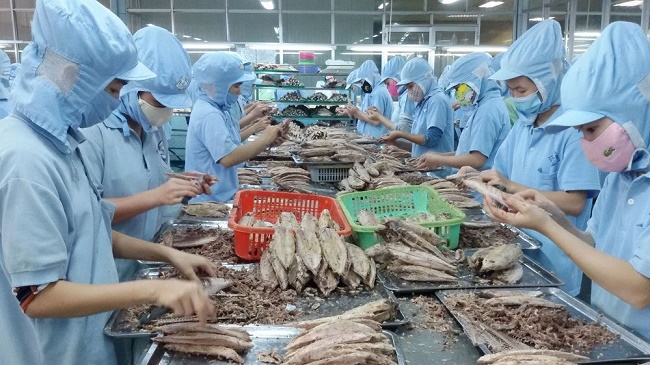
The inflow of foreign direct investment (FDI) into Vietnam has increased rapidly so far this year and is shifting in a positive trend.
The inflow of foreign direct investment (FDI) into Vietnam has increased rapidly so far this year and is shifting in a positive trend. As of July 20, the country had attracted US$12.9 billion in new FDI pledges, alongside another US$5.9 billion in additional pledges, without taking into account the US$3.1 billion, which was both contributed and used by foreign investors to buy stakes in Vietnamese businesses.
It is clear that the investment environment and the market in Vietnam are becoming increasingly attractive in the eyes of both indirect and direct investors from other countries.
 |
| In the first seven months of 2017, the manufacturing and processing industry attracts up to US$6.3 billion in FDI, from capital supplementation and contribution, representing 49.4% of the total registered capital. |
The scale of registered capital continues to expand at a rapid rate, with new FDI pledges in the first seven months of 2017 rising by 48.7% compared to the same period last year. The additional capital figure also posted an annual increase of 38.5%, bringing the total FDI capital to US$18.8 billion, up 45.3% against the same period of 2016, thus creating favourable conditions in which to achieve the FDI attraction target set for the whole 2017.
Despite a 2.1% fall in the number of newly registered FDI projects during the same period, at 1,378, the total registered value posted a 1.5-fold increase. Particularly, there were a number of new FDI projects worth billions of USD each in the energy sector. In addition, the scale of existing FDI projects has also expanded, with 677 projects registering to increase capital by an additional US$5.9 billion. Evidently, increasing the project scale not only helps to strengthen the FDI sector’s production capabilities and competitiveness, but also demonstrates the foreign investors’ confidence and their intention to conduct long-term business in Vietnam. However, FDI disbursement between January and July only reached US$9.1 billion, representing a modest 5.8% increase compared to the same period last year, and will therefore require more drastic and consistent measures to be taken in the near future in order to further realise the FDI pledges and strengthen the confidence among foreign investors.
In the first seven months of the year, the FDI structure by sector saw a number of noteworthy shifts, as the power, gas, hot water, steam and air conditioning manufacturing and distribution industry dethroned the manufacturing and processing industry to take the leading position, with a proportion of 40.7% of the total new FDI pledges, thanks to the presence of a number of large projects in the energy sector, particularly in thermal power. Despite receiving just US$4.5 billion in new FDI pledges during the period, the manufacturing and processing industry attracted up to US$6.3 billion from capital supplementation and contribution, representing 49.4% of the total registered capital, far above the 24% proportion of the power, gas, hot water, steam and air conditioning manufacturing and distribution industry, as well as the 26.6% ratio of all the remaining industries. Thus, in addition to the shifts by sector, there has also emerged a shift in the FDI structure within a sector.
In addition, the FDI structure by the investment region has changed, with the provinces of Thanh Hoa, Nam Dinh and Kien Giang rising to lead the list of the top ten localities in terms of FDI attraction, whilst Binh Duong, Ho Chi Minh City, Hanoi and Dong Nai have fallen to fourth, fifth, seventh and ninth place, respectively. The competition in FDI attraction among localities is taking place drastically in both intensive and extensive extents. Meanwhile, Asian investors overwhelmed the list of the largest FDI providers for Vietnam in the past seven months, as Japan took the leading position, accounting for 37.2% of the total newly registered capital, followed by Singapore with 21.8% and the Republic of Korea with 15%.
In summary, the FDI inflow into Vietnam is shifting in both intensive and extensive extents. Given that fact, it is a significant and urgent task to seize the shifting trend and direction of the FDI capital flow, as well as using the FDI capital’s advantages effectively in order to serve the country’s socio-economic development.
(Source:Nhan Dan)





